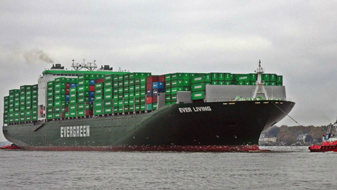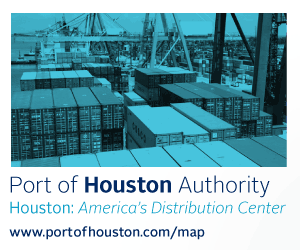|
Maersk Line has set the model that the rest of the shipping industry has tried to follow — targeting economies of scale, lowering unit costs and network optimization. This has allowed the company to lower its break-even line more than other lines, according to Drewry Maritime Research. But with rates now at historical lows and bunker costs rising, the maritime analysts assert that even a company of Maersk’s stature will feel the pinch.
When talking about carriers with 3 to 5 percent capacity, that more or less covers any top 20 carrier other than the big three of Maersk, MSC and CMA CGM.
With an aggregate fleet of just less than 17 million TEUs, the top 20 carriers now control 87 percent of the world’s available container capacity. Since the summer of 2005 – when the figure was 79 percent – the top 20 carriers have added a startling 10.2 million TEUs of ship capacity.
Closer inspection of the carriers’ rankings shows that there is a league-within-a-league with the biggest carriers providing most of the overall growth. Between 2005 and 2015 the compound annual growth rate (CAGR) of the top 3 carriers was 12.5 percent, significantly faster than the CAGR for the top 20 lines and the total fleet at 9.6 percent and 8.7 percent, respectively.
The top 3 carriers now have about a 38 percent share, which extends to 48 percent when including the other top 5 carriers Hapag-Lloyd and Evergreen.
Medium carriers are following the lead of the big carriers and ordering their own ULCVs. In doing so they make themselves a tougher catch for the big lines as the new assets will inflate their purchase
|

prices and at the same time make it harder to keep any merged entity beneath acceptable competition thresholds.
The purchase of ULCVs by mid-size carriers is therefore in some ways a defensive move to fight off attack, but the sting in the tail is that it guarantees years of overcapacity that will depress freight rates and profitability for all.
The make-up of the top 20 carriers has barely changed in the last 10 years. The exits of P&O Nedlloyd and CP Ships at the end of 2005 gave entry to PIL and Wan Hai – carriers with limited geographical scope. Wan Hai was unseated by UASC in 2009 only to return this year after the exit of CSAV.
The re-entry of Wan Hai demonstrates the lowering entrance fee required to become a member of the top 20. The Taiwanese carrier has a fleet of 230,000 TEUs and a market share of 1.2 percent. In 2012 it would have needed a fleet of 270,000 TEUs and a 1.6 percent share to be ranked twentieth.
In conclusion, Drewry says that although it does not predict any imminent large-scale carrier M&A, eventually the top 20 will shift to take in more of the small, regional carriers in the lower reaches of the table. In doing so it will necessitate a change in container shipping speak since "top 20" will no longer mean large and mid-sized deep-sea carriers.
|



